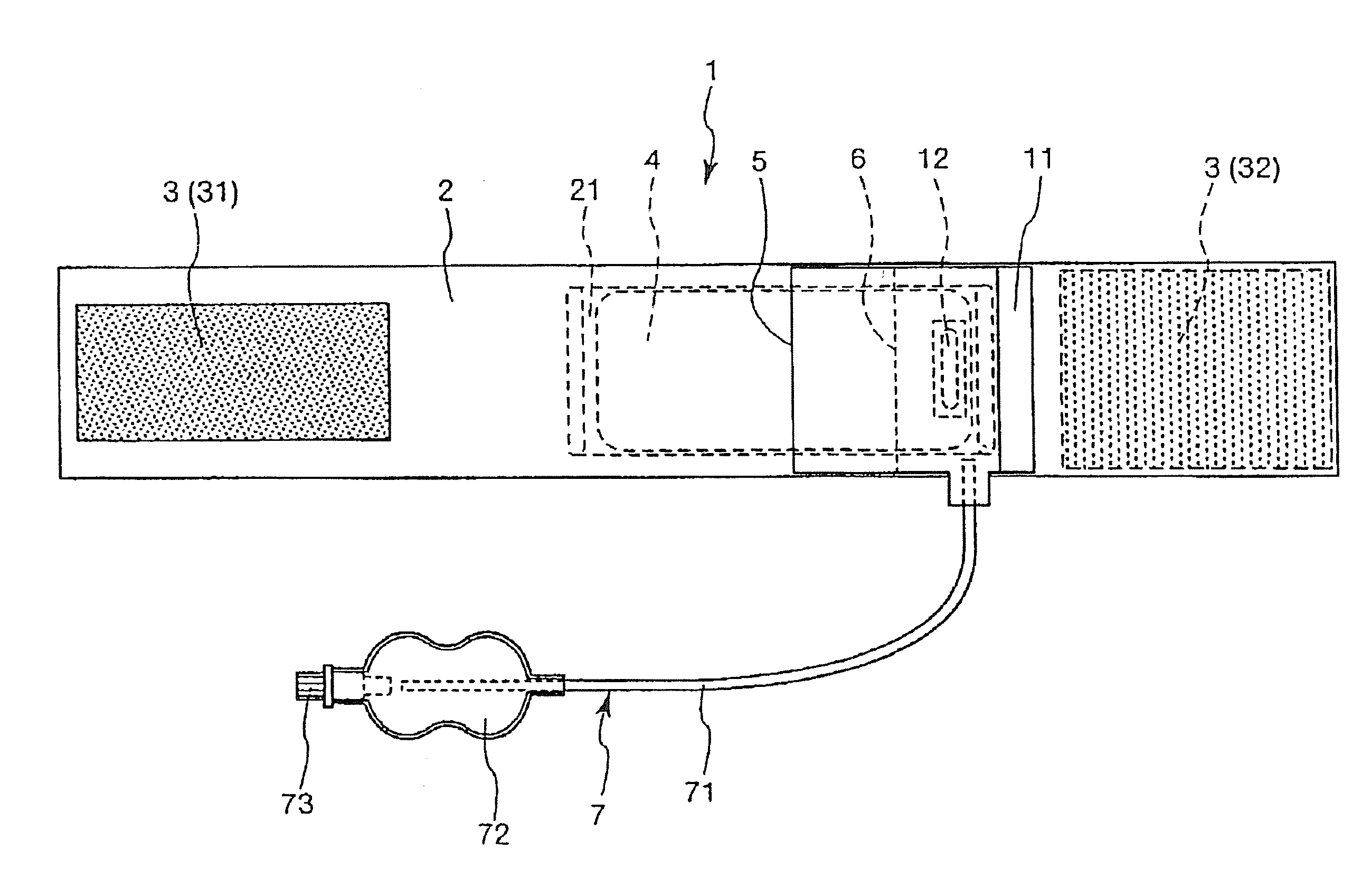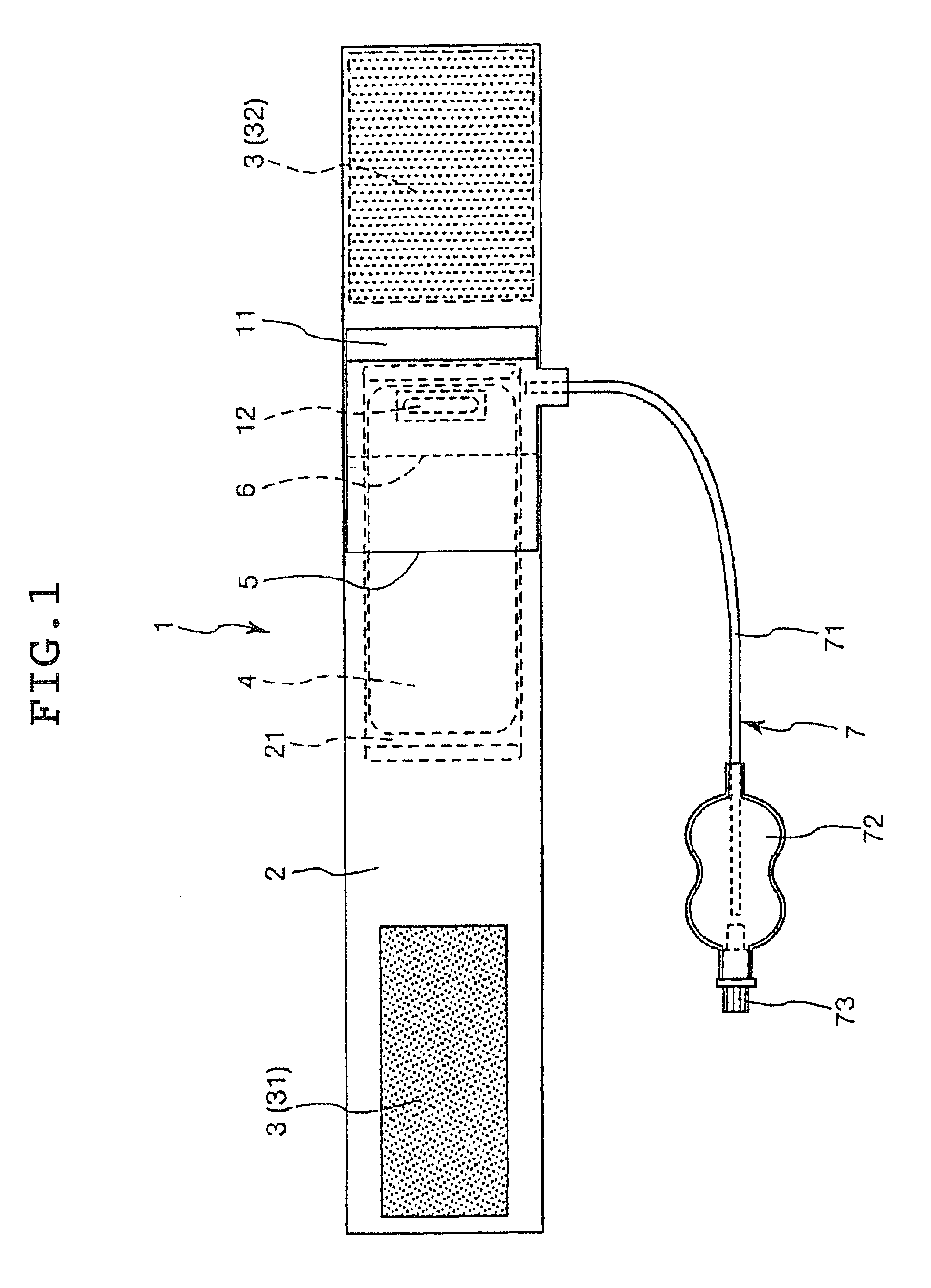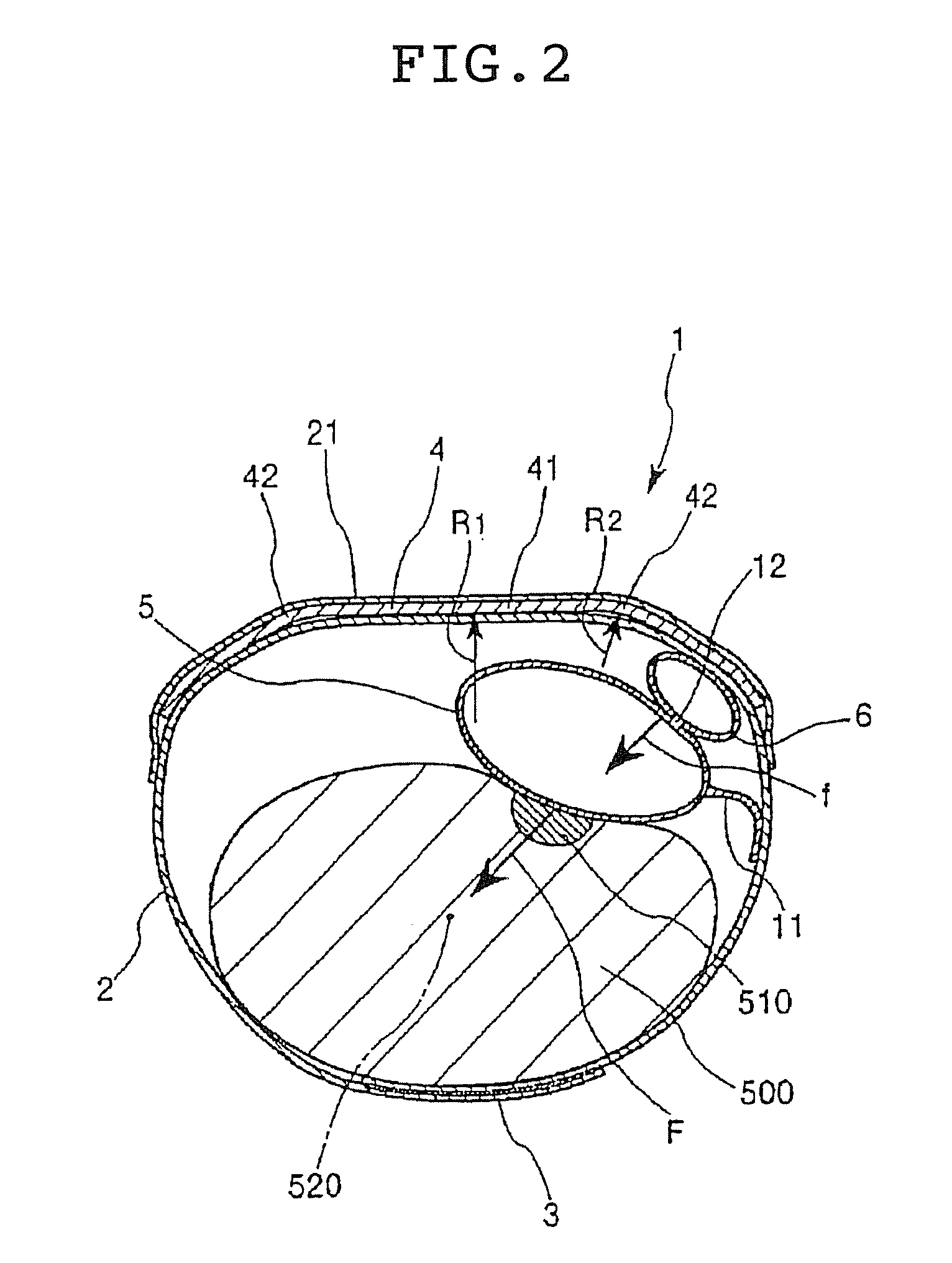Hemostatic device
a technology of a hemostatic device and a stent, which is applied in the field of hemostatic devices, can solve the problems of poor blood circulation, insufficient hemostatic effect in this pressing direction, and long time-consuming, and achieve excellent hemostatic
- Summary
- Abstract
- Description
- Claims
- Application Information
AI Technical Summary
Benefits of technology
Problems solved by technology
Method used
Image
Examples
first embodiment
[0080]As noted above, FIG. 1 is a bottom view of a first embodiment of the hemostatic device according to the invention. This shows the side of the device that serves as the inside surface when the device is attached to the wrist of a patient. FIG. 2 is a sectional view showing the same hemostatic device attached and in use on the wrist.
[0081]The hemostatic device 1 shown in FIGS. 1 and 2 is used to stop bleeding at a puncture site 510 following the removal of an instrument such as a catheter which was inserted percutaneously into an artery through a puncture formed somewhere on a limb, such as at a wrist 500, for a medical purpose such as treatment, examination or diagnosis. This hemostatic device 1 has a band 2 which is adapted to be wrapped around the wrist 500, a surface fastener 3 for securing the band 2 in a wrapped state to the wrist 500, a curved plate 4, a main balloon 5 and a secondary balloon 6.
[0082]The band 2 is a flexible belt-like member. As shown in FIG. 2, the band ...
second embodiment
[0121]FIG. 3 is a sectional view showing a hemostatic device according to a second embodiment of the invention during use.
[0122]The hemostatic device 10 in this embodiment has the same features as the hemostatic device 1 in the above-described first embodiment, except that the secondary balloon 6 is connected to the band 2 via a flexible connector 13.
[0123]In the present embodiment, the secondary balloon 6, by being connected to the band 2 via a connector 13 on the same side as the connector 11 for the main balloon 5 (i.e., the right side in FIG. 3), more easily and reliably assumes a tilted orientation. This more readily allows the pressing force f applied to the main balloon 5 to act in an oblique direction (that is, in a direction which causes the main balloon 5 to face substantially the center 520 of the wrist 500), thus enabling a better hemostatic effect to be achieved.
third embodiment
[0124]FIG. 4 is a sectional view showing a hemostatic device according to a third embodiment of the invention during use.
[0125]The hemostatic device 100 in this embodiment has the same features as the above-described first embodiment, except that it lacks a secondary balloon 6.
[0126]That is, in the present embodiment, there is no secondary balloon 6. Instead, the main balloon 5 comes into contact with the curved plate 4 through the band 2. Moreover, the balloon 5 is connected to the band 2 only on one side through a connector 11, thus giving the balloon 5 a somewhat tilted orientation, as shown in FIG. 4. This enables the compression force F applied to the puncture site 510 to act in an oblique direction (that is, in a direction facing the center 520 of the wrist 500). As in the first embodiment described above, the result is that a better hemostatic effect can be obtained.
[0127]Moreover, as in the first embodiment, the balloon 5 is positioned on the connector 11 side (the right sid...
PUM
 Login to View More
Login to View More Abstract
Description
Claims
Application Information
 Login to View More
Login to View More - R&D
- Intellectual Property
- Life Sciences
- Materials
- Tech Scout
- Unparalleled Data Quality
- Higher Quality Content
- 60% Fewer Hallucinations
Browse by: Latest US Patents, China's latest patents, Technical Efficacy Thesaurus, Application Domain, Technology Topic, Popular Technical Reports.
© 2025 PatSnap. All rights reserved.Legal|Privacy policy|Modern Slavery Act Transparency Statement|Sitemap|About US| Contact US: help@patsnap.com



